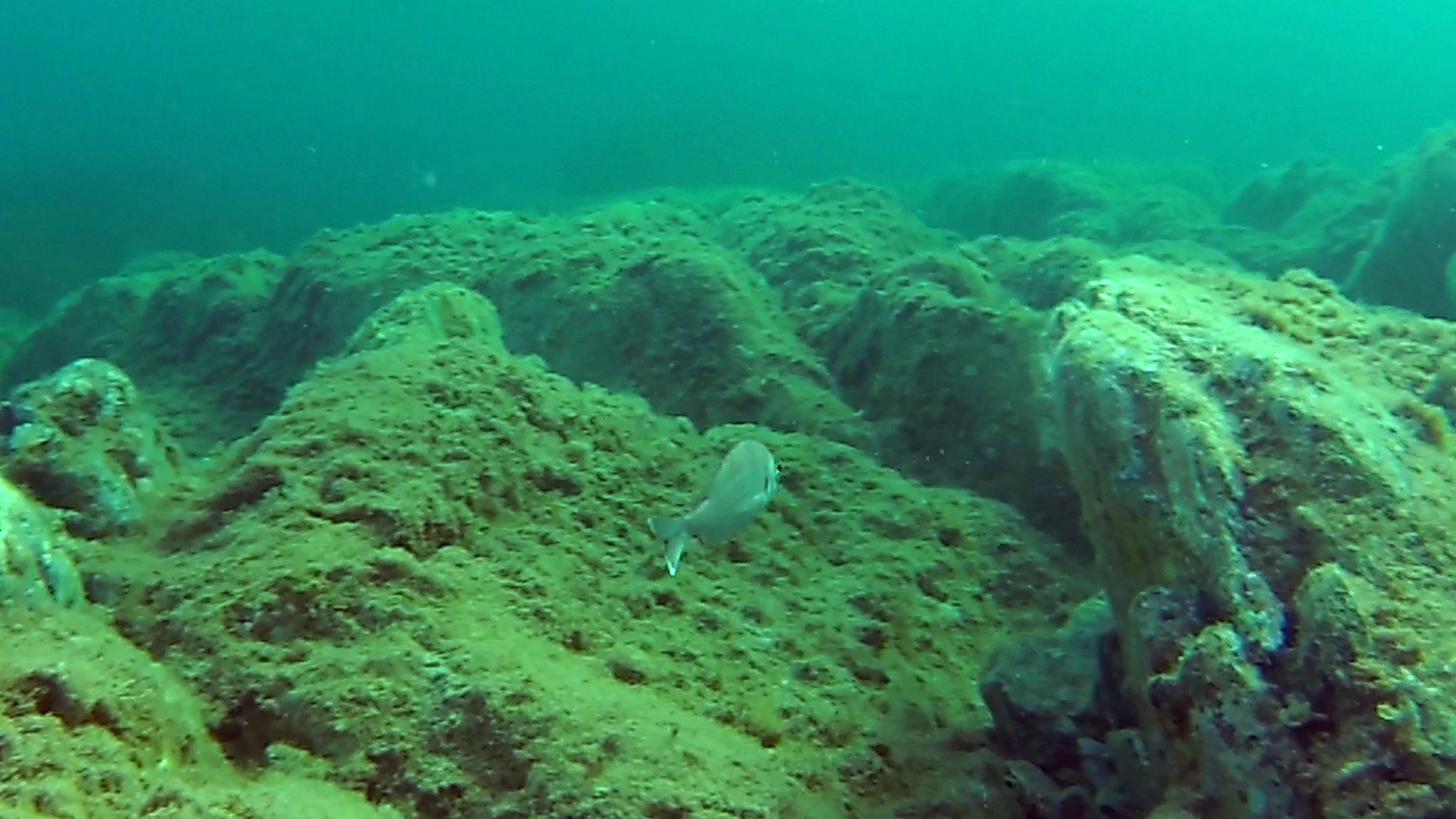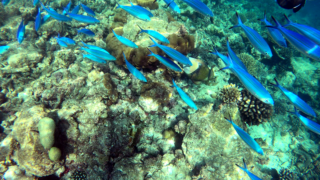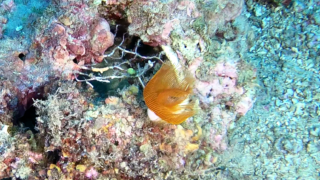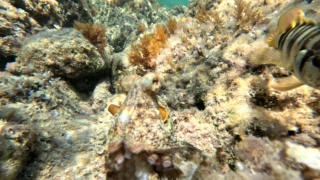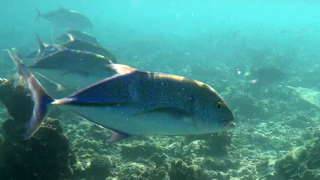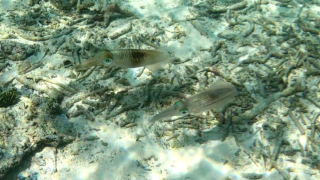Diplodus Sargus
Diplodus is one of the most common fish of the Mediterranean Sea belonging to the Diplodus genus of the Sparidae family. Diplodus Sargus Sarago Sparidi intotheblue.it

In the video we see two of these species: common two-banded sea bream, Diplodus vulgaris; and the Greater Sargus, Diplodus sargus sargus.
We are in the sea of Sardinia, at “Cala Cipolla” in the extreme south of the island between “Capo Spartivento” and the famous beach of Chia, where in apnea we are saved to approach and film a herd where both species were present.

 Sardegna Sardinia intotheblue.it
Sardegna Sardinia intotheblue.it
These fish are extremely adaptable to all Mediterranean habitats and we often find them together with other sparids and similar of their own kind. It prefers rocky bottoms and Posidonia meadows, but is practically present in any type of seabed.
We have filmed it in free water as he approaches, intrigued by the presence of the diver, and near his den from which he always comes out due to the presence of man.
Diplodus is a genus of marine bony fish belonging to the Sparidae family, commonly known as bream, which includes 15 species and 8 subspecies.

Two Banded Sea Bream (Diplodus vulgaris), commonly known as the common bream or the black-headed bream, is a marine bony fish belonging to the Sparidae family.
Distribution and habitat This species is widespread in the Mediterranean Sea, the Black Sea and the eastern Atlantic Ocean between the Gulf of Gascony and Senegal, including Madeira and the Canary Islands. It mainly frequents rocky coastal areas, especially near sandy bottoms, from 0 to 160 meters deep, normally not more than 30; unlike other bream it is rare in brackish waters.
https://en.wikipedia.org/wiki/Diplodus_vulgaris

Greater Sargus (Diplodus sargus or Diplodus sargus sargus) is a sea fish belonging to the Sparidae family.
Distribution and habitat This species is widespread in the Mediterranean, in the Black Sea (rare) and in the eastern Atlantic Ocean in the north up to the Gulf of Gascony. In Italian seas it is very common.
It is a fairly versatile species with respect to habitat. It can in fact be found on hard, sandy, Posidonia oceanica bottoms and even within the lagoons where salinity is not too low. However, the preferred environment is that of rocks covered with dense vegetation. It is a strictly coastal species.
https://it.wikipedia.org/wiki/Diplodus_sargus_sargus





